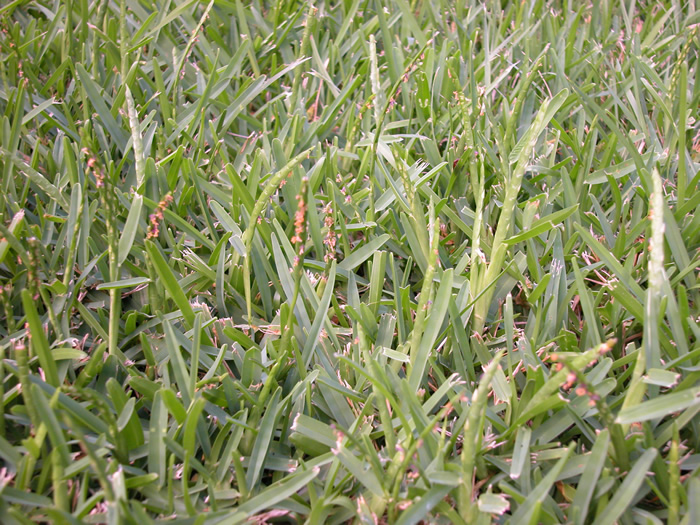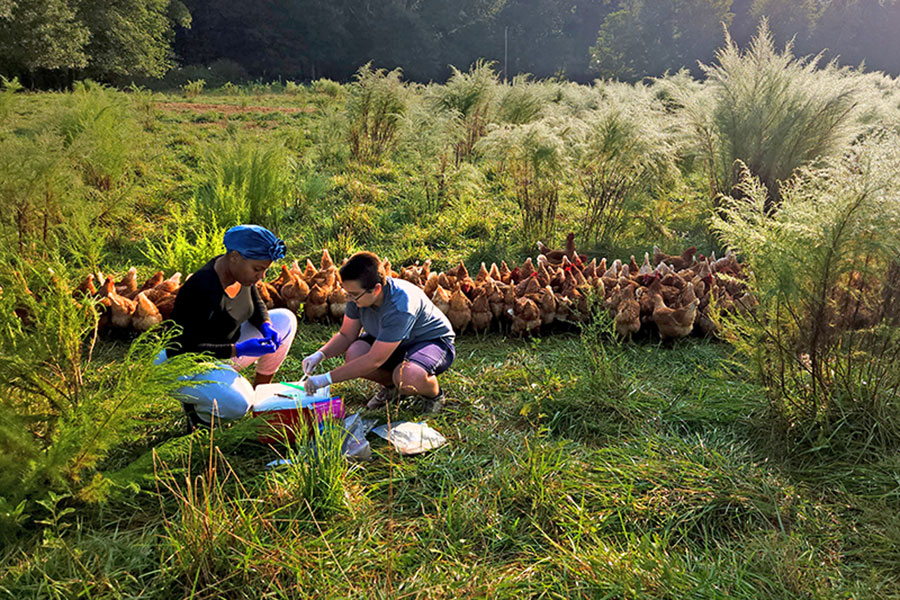St. Augustinegrass has long been admired in the southern part of Georgia for its attractive blue-green color, but many homeowners north of Macon are also discovering the grass. From Rome to Marietta to Athens, more homeowners are choosing St. Augustine grass for their warm-season lawns.
South Georgia gardeners have long relied on the grass because it thrives in warm weather and in sandy soils, but it has many other benefits.
St. Augustinegrass can be an excellent choice for dog owners. It has large flat stem and coarse leaves. Above ground runners, called stolons, help create a thick, dense turf. Although St. Augustinegrass does not recover well from concentrated wear such as a person, or dog, using the same path repeatedly, it can handle random wear, such as dogs playing on the lawn.
St. Augustinegrass has better shade tolerance than other warm-season grasses. It can be a good fit for lawns partially shaded by the home’s back patio and trees. Another bonus is healthy St. Augustinegrass holds its color better than other species during drought periods.
One of the main concerns about using St. Augustinegrass north of Atlanta is its cold hardiness. It can be susceptible to winter cold injury. “Raleigh,” “Palmetto,” and “Mercedes” are cultivars that show some cold hardiness and are suitable for North Georgia. A small lawn partially surrounded by trees and a patio structure may be more protected from the cold than a large open lawn area.
As with other warm-season grasses, site preparation is key for establishing a new, healthy St. Augustinegrass lawn. All weeds should be eliminated beforehand. The soil should be tilled thoroughly to a 4-inch depth with organic matter added. Fertilizer and lime should be included at rates recommended by soil test results. A soil test can be obtained through your local University of Georgia Cooperative Extension office.
Rocks and other debris should be removed as the area is raked smooth. Slope the area away from buildings. Sod or plugs establish St. Augustinegrass since no seed is available. Rolling the new lawn with a water filled roller will ensure good root to soil contact and a smoother lawn.
St. Augustinegrass should be mowed at a height of 2-3 inches. Keep the mower blade sharp to minimize grass blade wounds that would increase the chances of disease and unnecessary water loss. When there is no rainfall, water one inch per week. Fertilize according to soil test results. A healthy lawn is more able to stand up to insect or disease pressure.
Chinch bugs are one of insects that cause problems for St. Augustinegrass lawns. These bugs can cause major damage if not controlled. Chinch bug adults are 1/5 inch long and dark gray. Chinch bug injury can mimic other problems but it is characterized by yellowing dead patches of grass. These bugs are hard to spot and do damage quickly. An insecticide application will most likely be needed. If you suspect a chinch bug invasion, contact your local UGA Extension office for assistance with identification.
If you are considering a lawn change, St. Augustinegrass is worth a look. It is a dense, attractive grass that holds up well to heat, drought and dog play. However, it is susceptible to cold injury and chinch bug damage. You need to weigh the pros and cons, but St. Augustinegrass might be the turfgrass that meets your lawn needs.
Finally, be aware that some homeowner associations have strict rules about which grasses can be planted in the front yard. In the Atlanta area, St. Augustinegrass is not always on the approved list. Educating the homeowners association may change those rules to give homeowners a chance to weigh the pros and cons for themselves.
For more information on growing turfgrass in Georgia, see the UGA website www.georgiaturf.com.








